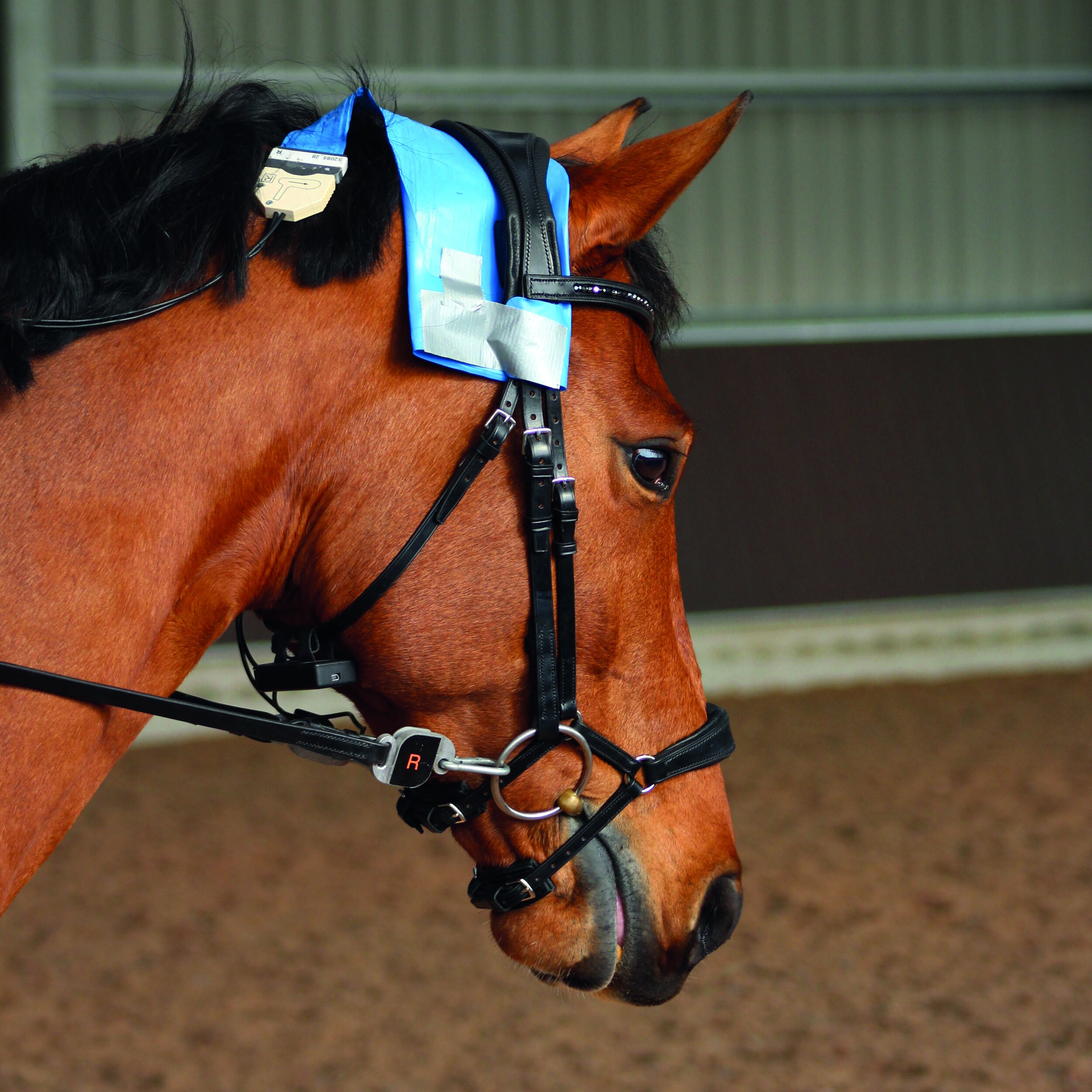On the bridle - Scientific research uncovers the performance advantages of reducing bridle pressure - which type of bridle works best for which type of horse
By Dr. Russell Mackechnie-Guire
Using a modified bridle design has a significant impact on whole horse locomotion–front and hindlimb–not just the head.
Recent scientific advances have seen an increase in performance-based research, particularly in the sport horse world where a podium finish can depend on the smallest of margins. The findings from the sport horse research can be translated to the racing Thoroughbred where the shortest distance can put you first past the post. All items of training tack and equipment have found themselves under scientific scrutiny, with some unexpected results which could have significant effects on racehorse performance. Perhaps one of the most surprising discoveries was the effect that bridle fit and design has on the locomotor apparatus of the horse (biomechanics). The bridle is a neglected item of tack which has, until now, received little scientific attention.
• Ahead of the game
As well as improving locomotion, these findings could have a significant benefit when it comes to resolving common issues affecting race performance, such as oral lesions in the commissures (corners) of the lips, tongue lolling and hanging, as well as steering or control issues. Research indicates that these behaviors are likely to occur as a result of the horse seeking relief from bridle pressure and instability. Tongue ties or Australian nosebands are two examples of gadgets traditionally used to remedy these issues, but they have their own welfare and pressure-inducing concerns. A more effective solution would be to remove the primary cause of discomfort which leads to the negative or undesirable behavior by using a modified pressure-relieving bridle design.
• Pressure head
Research using a calibrated pressure sensor mat, which was positioned beneath all parts of the bridle, revealed interesting findings and disproved some long-held assumptions. It had long been thought that horses experience bridle pressure directly on their poll. In contrast, the research team found no significant areas of pressure over the poll. Instead, areas of high peak pressure were located at the base of the ears in the region where the browband attaches to the headpiece. Anatomically this corresponds to the
temporomandibular joint (TMJ). The TMJ is an essential part of the physiological apparatus, associated with the swallow reflex and the hyoid apparatus (see anatomy panel). The location of pressure (base of the ear and TMJ) was consistent in all commonly used headpieces and occurred at the same moment in the stride, regardless of the make or design. The research team also used gait analysis where markers are placed on the horse’s anatomical locations (joints), allowing locomotion to be measured. This enabled them to quantify how front and hindlimb kinematics altered, revealing an increased range of limb motion when the peak pressures in the anatomical zones were removed.
• Noseband knowledge
Aspects of anatomy
Published research has shown that nosebands, as well as the headpiece, can be associated with extremely high pressure and distribution, and therefore also have significant effects on equine locomotion. From the research it was found that maximum noseband pressure was located on either side of the nasal bone, causing compression of the soft tissues in this area.
Similar to the headpiece, the timing and location of the noseband pressures were consistent in every stride cycle. During locomotion, noseband pressures differed relative to the horse’s head position. When the head was positioned more horizontally (for example when galloping), the frequently- chosen cavesson exerted significantly higher pressures on the lower edge of the noseband, which was associated with a reduced range of motion. Previous studies from this group have shown that reducing high pressures beneath a girth and saddle is associated with improved locomotion. The same relationship is seen with the bridle; areas of high pressures beneath the headpiece and noseband have a significant effect on equine locomotion and cause the horse to develop a compensatory locomotor strategy.
Aspects of anatomy
A specially designed Mexican grackle, which sits higher on the side of the horse’s head above the main artery and vein running under the facial crest, was found to exert the least pressure and, consequently, was associated with an improved locomotion and increased joint range of motion.
It might be easy to assume that removing the noseband removes the problem, but this has been shown to be counterproductive. A noseband provides stability to the bridle and improves the interface between bridle and head. It has been shown that horses perform better when the bridle (and all equipment) is stable. Horses require stability in order to effectively transfer propulsive forces from the hindlimbs to propel their mass forward. If the horse is unstable, it will seek a stabilizing strategy, which consequently will induce asymmetry and a loss in performance. The use of a noseband to improve bridle stability could therefore improve the locomotor apparatus, give the jockey a more refined contact and help influence gallop efficiency more effectively.
• A bit of stability
As well as stabilizing the bridle, bit stability is likely to be improved in a bridle with a noseband. …
CLICK HERE to return to issue contents or sign up below to read this article in full
ISSUE 59 (PRINT)
$6.95
ISSUE 59 (DIGITAL)
$3.99
WHY NOT SUBSCRIBE?





